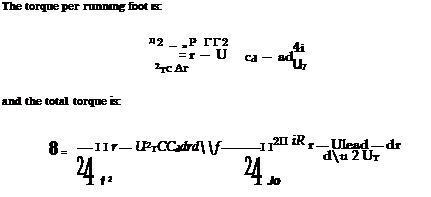Closed-Form Integration for Torque
The solution of the closed-form blade element method for the torque required in forward flight follows the procedures developed for torque in hover and for thrust in forward flight. The increment of torque as shown in Figure 3.35, is:’
AQ = r(AD – AL<|>) = Jad – ДL ^j
|
|
 |
|
|
|
|
|
 |
|
M/ 3 CLR (The equation has been written in this form to show the equivalence with the similar equation in reference 3.17).
 |
|
 |
|
The first part is the profile torque coefficient due only to the drag coefficient, and the second part is the inflow torque coefficient due only to the tilt of the lift vector. The inflow term includes both the induced and the parasite contributions as defined by the momentum equations. It can be simplified by using the equations for (Bl + ax) and (Д — bx) previously derived. With this substitution, all of the cyclic pitch and flapping terms drop out:
2  9 2 ) 3 CLR 8 CLRj
9 2 ) 3 CLR 8 CLRj
The last term, which is a function of a0 and Vy/CLR, is generally negligible when compared with the other terms. For this type of analysis, the value of cd to use is the average obtained as a function of CT/o as it was in hover—that is, as a function of angle of attack equal to 57.3 (Ct/g) degrees and at a Mach number corresponding to 75% of the tip speed. A more sophisticated way of handling the drag coefficient will be discussed later.












